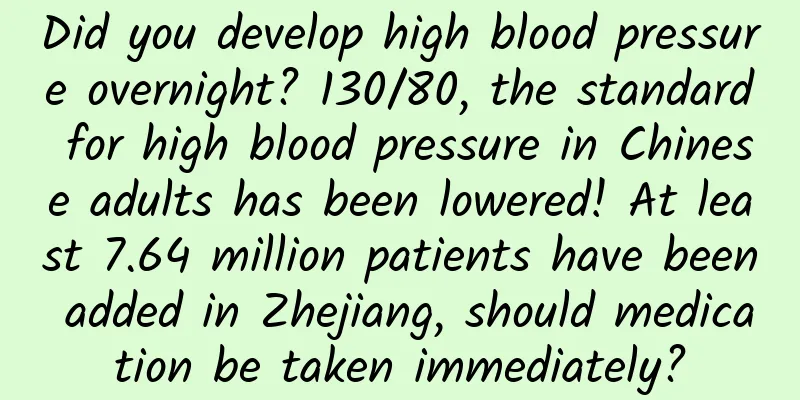Soaking these things in a thermos cup will not only increase your health, but also increase your toxicity? The truth is...

|
The weather is getting cooler Health companion thermos cups are "online" Thermos related rumors followed closely behind Keeping tea in a thermos cup for too long can cause poisoning Don’t put wolfberry water in a thermos cup … Is it true or false? China's Internet Joint Rumor Refutation Platform will clarify for you one by one Will brewing tea in a thermos for too long cause poisoning? There are rumors that tea scale will be produced after brewing tea, which will corrode the thermos cup and then precipitate heavy metals, eventually leading to chronic poisoning in people. The truth: The layer of scale formed by the accumulation of tea does not contain any corrosive components. The stainless steel used in the inner wall of the thermos is an inert material and is difficult to corrode. Therefore, the claim that "brewing tea in a thermos will release heavy metals" is not true. Why is the tea soup thick, dark, and bitter when brewed in a thermos cup? This is because long-term high-temperature brewing accelerates the volatilization of the aromatic substances in the tea leaves, affecting the taste, and has nothing to do with "heavy metals" or "toxic substances". When using a thermos cup, you need to prevent bacteria from growing. Since the inner liner of the thermos cup is relatively thick, a large number of bacteria will hide in the sanitary dead corners. It should be thoroughly cleaned after one day of use. You can put a little baking soda in the cup to rinse the inner liner. After cleaning, the water stains in the cup should be fully dried before covering the cup lid. Will saponin toxins be dissolved if soy milk is stored in a thermos? According to online rumors, if soy milk is placed in a stainless steel thermos cup (pot), the "saponins" in the soy milk will dissolve out, and drinking it will be harmful to human health. The truth: There is no saponin in boiled soy milk, so even if it is poured into a thermos cup (pot), the phenomenon of "toxins dissolving out of the soy milk" is impossible to occur. In addition, compared with directly placing soy milk in the air, it is safer to store soy milk in a thermos cup (pot). This is because after putting soy milk in a thermos cup (pot) and tightening the lid, a "closed space" is formed, and the air and microorganisms in the thermos container are limited, which is more hygienic and safer in a short period of time. For high-protein drinks such as soy milk and milk, it is best to drink them within 3 hours. If you want to keep them for a longer time, you must first soak and wash the thermos cup in boiling water to kill any bacteria that may be inside, and then pour in the soy milk, milk, etc. However, it is not recommended to use a thermos cup to store soy milk for a long time. Can’t put wolfberry water or carbonated drinks in a thermos? Many people believe that drinking wolfberry water or carbonated drinks in a thermos cup is harmful to the body, because the acid, alkali and salt in wolfberry and carbonated drinks will corrode the cup and cause the alloy elements to dissolve. The truth: Toxicity cannot be judged without considering the dosage. Although wolfberry and carbonated drinks have acidity and alkalinity, they are very weak. Even if you soak them for several days in a row, there is no need to worry about alloy elements dissolving out of the stainless steel cup that meets the standards. Even if there is a trace amount of alloy elements corroding and dissolving out, the alloy elements such as chromium, nickel, manganese, and molybdenum in the stainless steel used in tableware are all essential trace elements for our human body and will not affect our health. If you soak wolfberries in high-temperature water (over 80°C) for a long time, many of the vitamins and other nutrients in the wolfberries will be lost. In addition, the medicinal effects of wolfberries cannot be fully exerted when they are soaked in water. If the liner of the thermos is made of high-manganese, low-nickel steel, do not store carbonated drinks for a long time. Is a thermos cup that can be attracted by a magnet a good thermos cup? Faced with the wide variety of thermos cups in the market, many consumers will distinguish the quality of the material by whether the stainless steel is magnetic, and believe that a thermos cup that can be attracted by a magnet is a good one. The truth: According to the national standard GB9684, stainless steel materials used for tableware include austenitic stainless steel, austenitic-ferritic duplex stainless steel, ferritic stainless steel, etc., among which austenitic stainless steel is non-magnetic. The common 304 and 316 stainless steels are non-magnetic austenitic stainless steels. Their main alloying elements are iron, chromium, and nickel, and they are relatively expensive. Low-nickel (nickel-saving) manganese-containing austenitic stainless steels are also non-magnetic. They use manganese and nitrogen to replace part of the nickel. They are relatively cheap, but their performance and safety are not bad. Therefore, magnetism is not a criterion for judging the quality of a thermos bottle. People who are allergic to metal elements must check the specific composition of the corresponding stainless steel on the Internet according to the stainless steel grade marked. For example, patients who are allergic to nickel should not choose 304 stainless steel products, and patients who are allergic to manganese should not choose low-nickel and manganese-containing stainless steel products. There is a trick to choose a thermos cup: mainly "see" whether the physical evidence is consistent First look at the label to see if it is detailed and scientific. Second, look at the material. The preferred materials for the inner liner are 304 and 316 stainless steel, but other materials can also be chosen with confidence as long as they are clearly marked and meet national safety standards. Pay attention to the material of the inside of the cup lid and the straw that are in direct contact with the contents to see if they meet food safety standards. Third, check the appearance. Pay attention to the outer surface of the cup, welding points, printed text and patterns to see if there are any abnormalities. Check whether the switch button of the cup cover is normal, whether the rotation performance and sealing are guaranteed; check whether each component is easy to disassemble, clean and reassemble. Fourth, look at the heat preservation efficiency. Under the specified ambient temperature of 20℃±5℃, the higher the retention temperature of 95℃±1℃ hot water after being placed for a specified time, the better the heat preservation efficiency. This article was reviewed and approved by Ruan Guangfeng, Director of the Science and Technology Department of the China Food and Nutrition Information Exchange Center Popular Science in China: Talks from Masters at the Frontier of Science and Technology China Internet Joint Rumor Refutation Platform Xinhuanet Science Department Co-production |
<<: Why do babies add complementary foods? How to make complementary foods for babies
>>: Cancer Myths Quick Check Guide - Carcinogenicity
Recommend
How long does it take for the uterus to contract during a cesarean section?
Many young mothers may choose cesarean section in...
Thigh pain during menstruation
Many women experience some abnormal physical cond...
What causes chest pain before menstruation?
Because in fact everyone's physical condition...
The advantages and disadvantages of postpartum foot bath
Soaking feet in hot water is good for the human b...
Breast pain before period
In the week before a woman's menstruation, th...
Who does liver cancer favor?
Globally, there are tens of thousands of new case...
Can I eat razor clams during menstruation?
Women during menstruation need nutritional supple...
How to remove the hair on the pork skin How to clean the hair on the pork skin
Pork is a kind of red meat that we often eat. Dif...
Can I inject hyaluronic acid while breastfeeding?
Hyaluronic acid is a large molecular glucosamine ...
Ovulation test strips with double bars during menstruation
It is quite common to see a positive result on th...
Menstrual symptoms approaching menopause
Menopause is a process that every female friend m...
I have been deceived by black sesame pills for too long! What is the real secret to growing long hair?
Recently, #Eating too many black sesame pills may...
Is it good to drink pure milk in early pregnancy? Is it good to drink pure milk during pregnancy?
The baby grows and develops in the mother's w...
Counterpoint: Global smartphone market declines 14% in Q1 2023, Xiaomi falls 22%
According to the latest report released by market...









